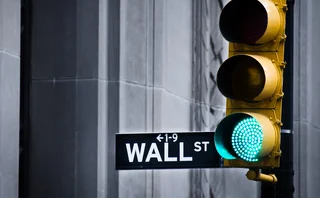
Credit derivatives market will follow equity's lead, strategist says
After the collapse of securitised products over the past two years, the credit derivatives market is likely to become more similar to the equity derivatives market, according to Sivan Mahadevan, global head of equity and credit derivatives strategy at Morgan Stanley in New York.
Mahadevan told Risk News that high equity volatility has led to increased use of equity options – and, similarly, high levels of tail risk in the credit markets could lead to more sales of credit spread options. The future of credit derivatives trading, he predicted, will be in 'delta-one' products, debt/equity hybrid strategies and credit optionality, rather than securitisation.
"We believe that the natural seller of protection is not going to come from the securitisation model that we have seen in the past, but will evolve towards a framework that is similar to what we see in the equity markets – the creating and trading of portfolios of equity risk which is either not levered, or levered to a minimal degree: exchange-traded funds, equity futures and swaps," Mahadevan said.
In a sense, this is a return to the roots of credit trading: the creation of the credit default swap (CDS) indexes in 2000 and 2001 led to initial interest in delta-one instruments, although this was soon overtaken as the momentum for securitisation picked up – with spreads tightening, investors sought more leverage, which led to the popularity of complex products such as synthetic collateralised debt obligations. Now, however, if spreads remain wide, and correlation falls as sectors distinguish themselves in terms of relative performance, the market could see increased demand for more sector-specific indexes in investment grade and high-yield credit markets, according to Mahadevan.
Another possible strategy is driven by greater credit volatility in the various parts of the capital structure, combined with the idea that companies that are very similar can have very different corporate capital structures. This lends itself well to valuing companies on an enterprise-value basis, he suggested: trading the enterprise value of companies could become more common via debt/equity hybrid structures, such as the combination of an equity swap paired with a series of CDS contracts referencing the debt portion of the capital structure, effectively a new way to trade companies in the market via swap form.
See also: Primus downgrade prompts questions over CDPCsA free lunch and the credit crunch
Only users who have a paid subscription or are part of a corporate subscription are able to print or copy content.
To access these options, along with all other subscription benefits, please contact info@risk.net or view our subscription options here: http://subscriptions.risk.net/subscribe
You are currently unable to print this content. Please contact info@risk.net to find out more.
You are currently unable to copy this content. Please contact info@risk.net to find out more.
Copyright Infopro Digital Limited. All rights reserved.
As outlined in our terms and conditions, https://www.infopro-digital.com/terms-and-conditions/subscriptions/ (point 2.4), printing is limited to a single copy.
If you would like to purchase additional rights please email info@risk.net
Copyright Infopro Digital Limited. All rights reserved.
You may share this content using our article tools. As outlined in our terms and conditions, https://www.infopro-digital.com/terms-and-conditions/subscriptions/ (clause 2.4), an Authorised User may only make one copy of the materials for their own personal use. You must also comply with the restrictions in clause 2.5.
If you would like to purchase additional rights please email info@risk.net
More on Credit markets
Liquidnet sees electronic future for grey bond trading
TP Icap’s grey market bond trading unit has more than doubled transactions in the first quarter of 2024
Single-name CDS trading bounces back
Volumes are up as Covid-driven support fuels opportunity for traders and investors
Podcast: Richard Martin on improving credit migration models
Star quant proposes a new model for predicting changes in bond ratings
CME to pass on Ice CDS administration charges
Clearing house to hike CDS index trade fees from July after Ice’s determinations committee takeover
Buy side fuels boom in single-name CDS clearing
Ice single-name CDS volumes double year on year following switch to semi-annual rolls
Ice to clear single-name bank CDSs from April 10
US participants will be able to start clearing CDSs referencing Ice clearing members
iHeart CDS saga sparks debate over credit rules
Trigger decision highlights product's weaknesses, warns Milbank’s Williams
TLAC-driven CDS index change tipped for September
UK and Swiss bank Holdco CDSs likely inclusions in next iTraxx index roll, say strategists







